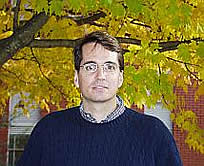 |
Prof. Francis RobicheauxI've been a
professor of physics at Purdue University since 2013 (previously at
Auburn University 1993-2013). My research area is Theoretical Atomic
Physics, focusing on coherence and decoherence in quantum
systems, many body processes when photons interact with many atoms,
highly
excited (Rydberg) atoms, strong fields, and
ultracold plasmas. My group typically consists of undergrads,
grad students, and postdocs. I'm a member of the ALPHA collaboration:
the first group to trap the antimatter version of the Hydrogen atom and
the only group to quantitatively measure its properties.
|
|
|
Ultracold PlasmaUltracold plasmas review article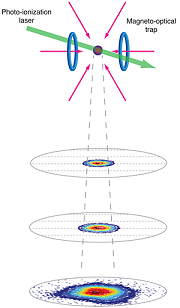 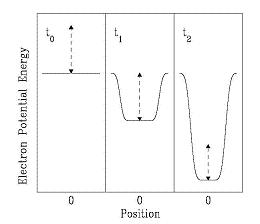 In many of these plasmas, the electrons are cold enough to form a substantial population of Rydberg atoms. These atoms substantially change the evolution of the plasma. The interplay between the electrons, ions and Rydberg atoms leads to a rich variety of behavior. In several of the early experiments, it was not at all clear what was going on and many of the early interpretations of the experimental results were often flawed or very incomplete. We performed calculations of this system using standard atomic and plasma processes. Our calculations agreed very well with all experiments and provided several predictions that were verified in later experiments. We could use our simulations to provide the needed interpretation of this system. Below is a brief description of results in two recent publications. S.D. Bergeson and F. Robicheaux, "Recombination fluorescence in ultracold neutral plasmas," Phys. Rev. Lett. 101, 073202 (2008). PDF (229 kB) This was a collaboration with the experimental group of Scott Bergeson to study the result of fluorescence from an ultracold plasma. The fluorescence arises from a complex series of events that starts with three body recombination and the subsequent collisions between the electrons and the atoms that form in the plasma. 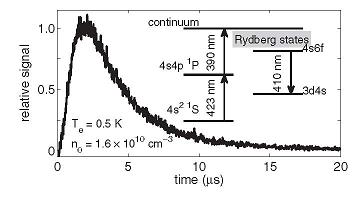 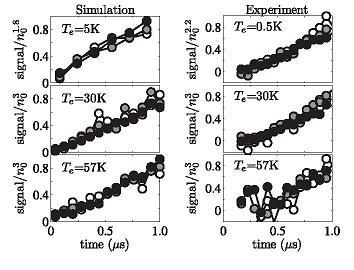 F. Robicheaux, B.J. Bender, and M.A. Phillips, "Simulations of an ultracold, neutral plasma with equal mass for every charge," J. Phys. B 47, 245701 (2014). PDF (283 kB) This paper gives the results of calculations for a system suggested to me by Phil Gould. The idea is to investigate the behavior of an ultracold plasma but for the case where the mass of the positive and the negative charges are the same. Five Recent Publications
E.V. Crockett, R.C. Newell, F. Robicheaux, and D.A. Tate, "Heating and cooling of electrons in an ultracold neutral plasma using Rydberg atoms," Phys. Rev. A 98, 043431 (2018). PDF (1060 kB) F. Robicheaux, B.J. Bender, and M.A. Phillips, "Simulations of an ultracold, neutral plasma with equal mass for every charge," J. Phys. B 47, 245701 (2014). PDF (283 kB) K Niffenegger, K A Gilmore and F Robicheaux, "Early time properties of ultracold neutral plasmas," J. Phys. B 44, 145701 (2011). PDF (441 kB) S.D. Bergeson, A. Denning, M. Lyon, and F. Robicheaux, "Density and temperature scaling of disorder-induced heating in ultracold plasmas," Phys. Rev. A 83, 023409 (2011). PDF (310 kB) F. Robicheaux, S. D. Loch, M. S. Pindzola, and C. P. Ballance, "Contribution of near threshold states to recombination in plasmas," Phys. Rev. Lett 105, 233201 (2010). PDF (173 kB) |
robichf[at]purdue.edu Links: |
